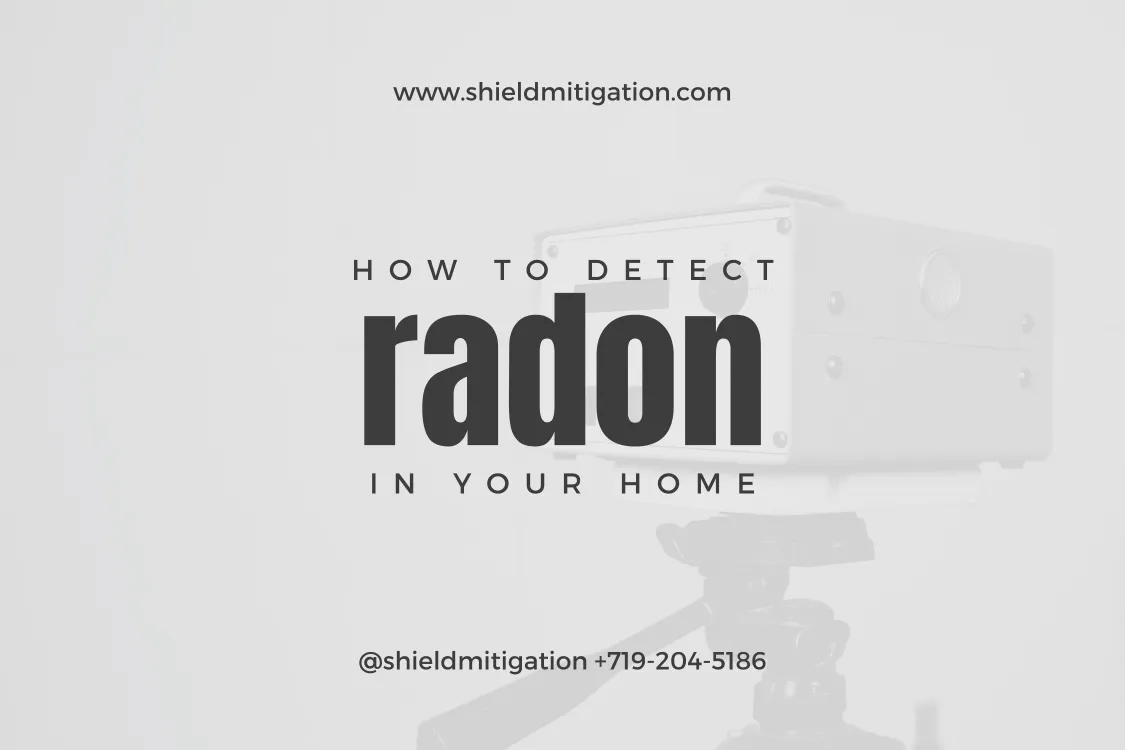
How to Detect Radon
How To Detect Radon In Your Home.
Radon is a silent threat that can have serious health consequences if left undetected in your home. This invisible, odorless gas is the second leading cause of lung cancer in the United States. The only way to know if your home has high radon levels is through testing. In this blog post, we'll guide you through the process of detecting radon in your home, from understanding what radon is to choosing the right testing method.
Radon is a naturally occurring radioactive gas that results from the decay of uranium in soil, rock, and water. It can enter homes through cracks in the foundation, gaps around pipes, and other openings. Once inside, it can accumulate to dangerous levels, particularly in well-sealed, energy-efficient homes.
Why Testing for Radon is Essential
Radon is a significant health risk because it is a carcinogen. Prolonged exposure to high levels of radon increases the risk of developing lung cancer. Because radon is invisible and odorless, the only way to determine if it is present in your home is through testing.
Types of Radon Tests
There are two main types of radon tests: short-term tests and long-term tests. Both have their specific uses and benefits.
1. Short-Term Tests:
Short-term tests are a quick way to get an initial reading of your home's radon levels. These tests typically last between 2 to 7 days.
- Activated Charcoal Tests: These are the most common short-term tests. They use activated charcoal to absorb radon. After the test period, the charcoal is sent to a lab for analysis.
- Electret Ion Chamber Tests: These tests use an electrostatic charge to measure radon levels. The device is exposed to the air for a short period and then sent to a lab for analysis.
2. Long-Term Tests:
Long-term tests provide a more accurate measurement of your home's average radon levels over an extended period, usually 90 days to one year.
Continuous Radon Monitors: These electronic devices measure and record radon levels continuously over a long period, providing a detailed picture of radon fluctuations in your home.
How to Perform a Radon Test
1. Choose the Right Test Kit:
Select a test kit that suits your needs. For an initial screening, a short-term test is a good starting point. For more accurate results, especially if you suspect high levels of radon, a long-term test is recommended.
2. Follow Instructions Carefully:
Read and follow the instructions included with your test kit. Proper placement and handling of the test kit are crucial for accurate results.
- Place the test kit in the lowest level of your home where you spend significant time, such as a basement or ground floor.
- Avoid placing the test kit in areas with high humidity, such as bathrooms or kitchens, as this can affect the results.
- Keep windows and doors closed as much as possible during the test period to avoid skewing the results.
3. Record the Test Period:
Note the start and end times of the test period. This information is necessary for analyzing the results accurately.
4. Send the Test Kit to the Lab:
Once the test period is complete, follow the instructions for sending the test kit to the lab for analysis. Be sure to include any required information, such as the start and end times, location of the test, and any payment required for analysis.
For a professional test call Shield Mitigation today to schedule one of our Radon Testing Professionals to come and get a long term test set up.
Interpreting Test Results
Radon levels are measured in picocuries per liter (pCi/L). The Environmental Protection Agency (EPA) recommends taking action if your home’s radon level is 4.0 pCi/L or higher.
Below 2.0 pCi/L: Radon levels below this threshold are generally considered safe.
- 2.0 to 4.0 pCi/L: These levels indicate a moderate risk. Consider additional testing or mitigation if levels are consistently in this range.
- Above 4.0 pCi/L: Levels at or above this threshold are considered high and require immediate action to reduce radon levels.
Detecting radon in your home is a crucial step in protecting your family’s health. Regular testing and timely mitigation can significantly reduce the risk of radon-related health issues. If you have concerns about radon or need professional assistance, Shield Mitigation is here to help. Contact us today for expert radon testing and mitigation solutions to ensure a safer living environment for you and your family.